1080-1684: Ertholmene’s history is ancient
In all probability, the strait between Christiansø and Frederiksø has been used as a harbour for more than a thousand years. Before the fortress was built, the islands were periodically home to pirates.
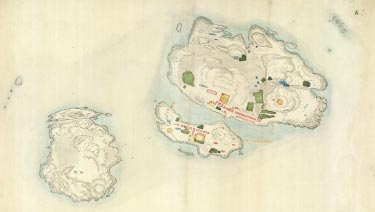
In the Middle Ages, Ertholmene was a rugged and desolate place, frequented by Wendish pirates who ravaged the Danish waters.
Around the year 1080, King Canute sent his earl, Blood Egil the Viking, to Ertholmene with a company of guards to keep the pirates away. The temptation proved too much for Blood Egil, however, who ended up plundering a ship at Ertholmene and burning its crew alive.
In the 1300s, Ertholmene was used as a base by pirates from the Hanseatic towns in Germany. For this same reason, Queen Margrethe I had plans to build a castle on the islands to keep the pirates at bay.In periods of peace, the islands’ natural harbour was used by fishermen from Bornholm, who stayed on the islands during the summer months.
1684-1708: Construction of the fortress
Construction of Christiansø began during the Dano-Swedish Wars. Some of the construction was carried out by Norwegians, in a hard life and death struggle against nature.

In summer 1684, the first pounding of hammers could be heard at Ertholmene.
Construction of the fortress had begun. In 1658, Denmark had surrendered Skåne, Halland and Blekinge to Sweden and therefore needed a new harbour for its warships in the Baltic Sea. 288 Norwegians were sent to the rocky island, under the leadership of Anthony Coucheron, a Dutch fortress engineer with experience from building fortresses in rocky terrain in Norway.Store Tårn (Big Tower) and Lille Tårn (Little Tower), along with four detached gun batteries were the first structures to be built. Most of the granite for the bastions and walls was quarried on site, but some was sailed in from Bornholm, from Hammershus and other locations.
1709-1720: The Great Northern War
During the Great Northern War, Christiansø was used from 1709 as a base for both privateers – state-authorised pirates of sorts – and the navy, led by famed naval hero Tordenskjold.
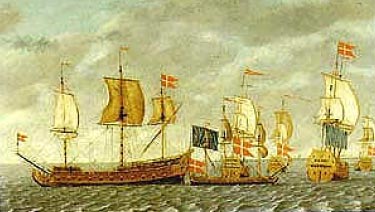
Thanks to Christiansø’s geographic location, the fortress played a major role in two important conflicts in European history. The first was the Great Northern War, 1700-1721. With Christiansø’s natural location between Sweden and Swedish Pomerania, the fortress served for extended periods as a base for a Danish blockade of the waters between mainland Sweden and its Northern German possessions. This blockade was carried out by, among others, famed navel hero Peter Wessel Tordenskiold (commonly called Tordenskjold, which literally translates to Thunder Shield), who used Christiansø as a naval outpost.The fortress was also used as a base by privateers. One night, the island itself was invaded by Swedish privateers, who managed to set fire to a couple of ships.
1721-1800: Fishing, convicts and disrepair
After the Great Northern War, there was peace in Denmark for nearly 80 years. During that time, the fortress fell into disrepair and Christiansø became a convict settlement while the soldiers became fishermen.
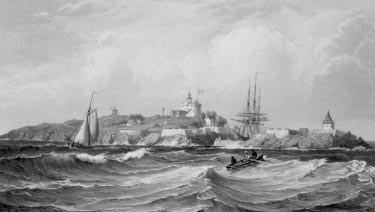
During what is known as the “long period of peace” between 1721 and 1800, there wasn’t much need for a military fortress, and during that century Christiansø became something of a wilderness. However, this also paved the way for the development of an actual island community. Soldiering was replaced by fishing as the principal occupation.
During this period, the fortress also became a place to send difficult prisoners. Convicts, criminals, lunatics, psychopaths and political dissidents were sent to this prison in wind-swept, jagged surroundings – either as jernfanger (literally iron prisoners) to perform hard labour in the local granite quarry or simply to keep them out of sight. Christiansø continued in this function until it was decommissioned.
1801-1814: The English Wars
Christiansø regained its military importance during the Napoleonic Wars when Denmark went to war against England. This became the most dramatic period in the history of the fortress, with privateers, bombardments and mutinies.
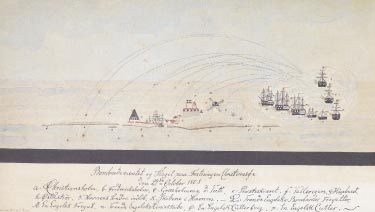
In the war against England in 1807-14, the population of Christiansø more than doubled when many soldiers were sent to the islands as reinforcements. The islands became one of Denmark’s most important bases for the Danish state-authorised pirates – privateers – who attacked English and Swedish trade ships in the Baltic Sea.
In 1808, the fortress was subjected to the worst English attack of the war. The attack failed, however, and the English sailed home empty-handed. In 1809, 200 marines committed mutiny, stabbing their commander to death, arresting the officers and taking control of the fortress. The drama ended with the rebels fleeing to Sweden.
1815-56: Decommissioning of the fortress
In 1826, the prominent prisoner Dr Dampe was banished to Christiansø, and for a couple of years Frederiksø was a quarantine station during a terrible epidemic. However, in 1856, the fortress was decommissioned.
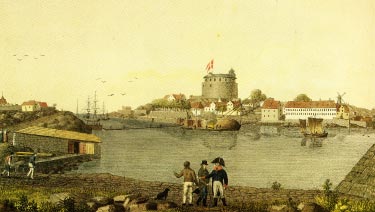
In 1826, Dr Dampe was given a life sentence and sent to Christiansø. He was sentenced for a violent attempt to overthrow the Danish absolute monarchy. In Dampe’s 15 years on the islands, he made several failed escape attempts. However, he did develop good relations with a number of the fortress residents.
In 1831, Frederiksø was converted into a quarantine station as Asiatic cholera spread through Russia. The bridge between the two islands was torn down, and Frederiksø was shut off to all but the ships, which had to be disinfected before continuing their journey through Danish waters.Construction of the fortress continued on the islands. However, progress had overtaken the fortress, and Christiansø’s stone walls could not stand against the war technology of the day. In 1856, the fortress was therefore decommissioned.
1856-2013: Fishing community and artists’ colony
In the 1900s, the population of Christiansø primarily consisted of fishermen. However, artists also spent time there. During World War II, the island was used as a supply line for the Danish resistance.
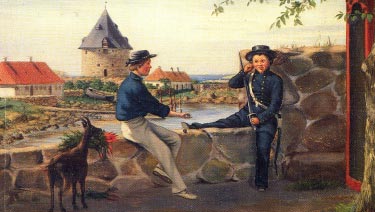
Naturally, the decommissioning of the fortress caused a great deal of unemployment on Christiansø, and the Danish government feared that the island would decline into a fattigkoloni (literally a settlement of paupers). The many unemployed families were therefore ordered to leave the islands. However, when it became clear to the government after a few years that the residents could make a living from fishing, many families were permitted to move back.
In the early 1900s, artists discovered the unique landscape, light and colours on Christiansø, but the ancient fortress with its grey expanses and straight lines also became a favourite subject for artists such as Edward Weie, Carl Isakson, Harald Giersing, Axel Salto, Aage Gitz-Johansen and many more.
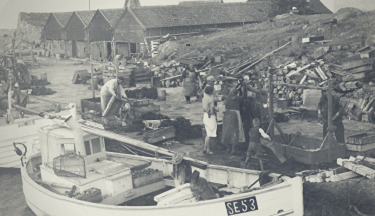
In 1922, Christiansø’s buildings became protected as historical sites, and later the flora and fauna on the islands also became protected.
During World War II, from 1940 to 1945, two German soldiers were stationed on Christiansø. During that same period, many of the island’s fishermen helped to transport Jews to Sweden and smuggled weapons to the Danish resistance. Fortunately, the two Germany soldiers never caught on to any of this.
In 2013, the last commercial fisherman left Christiansø.